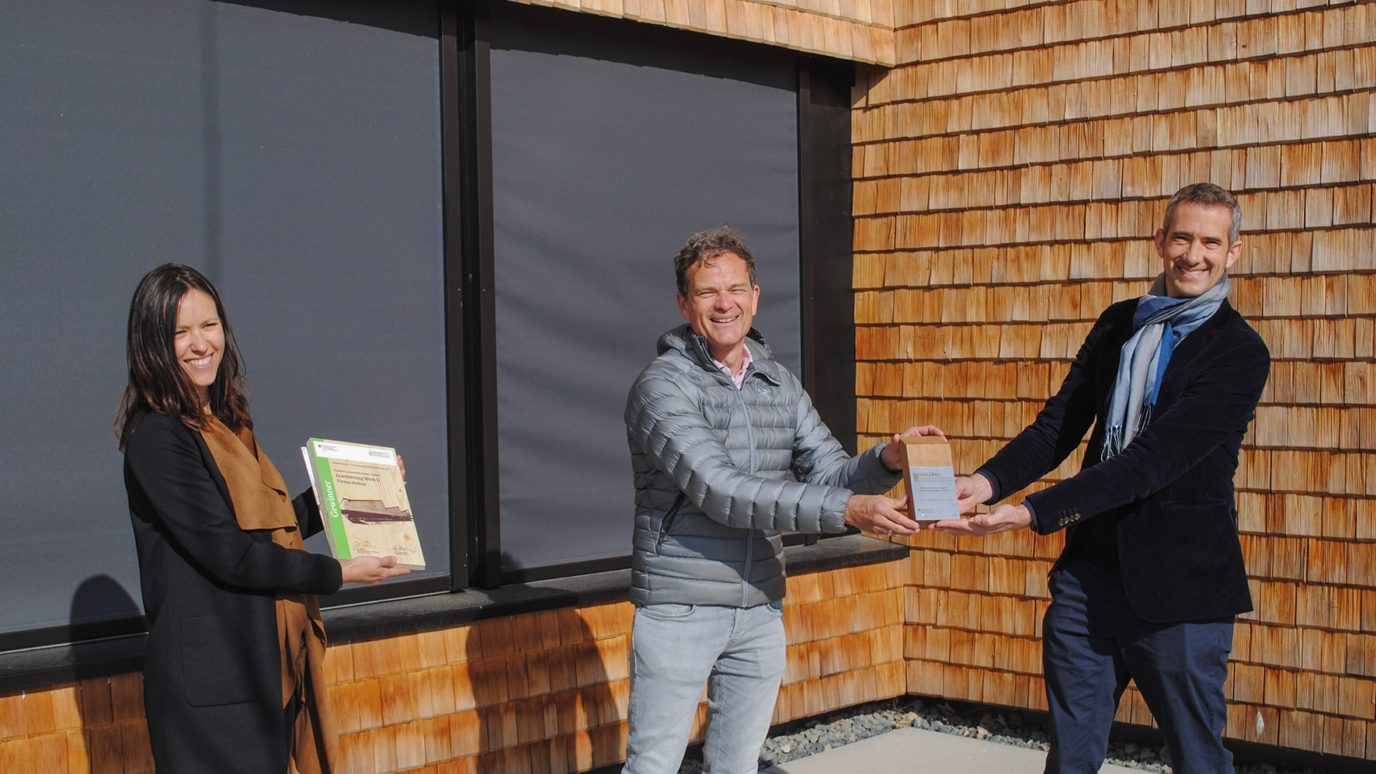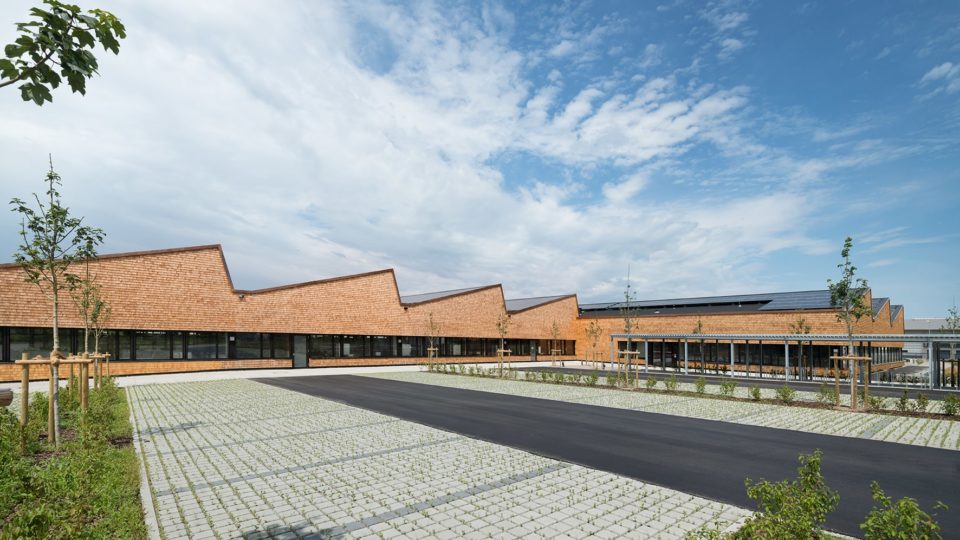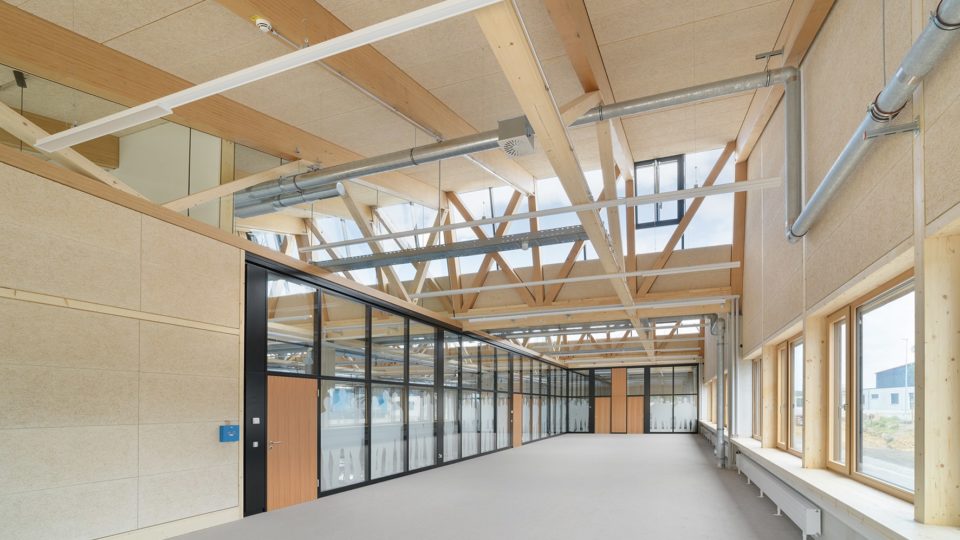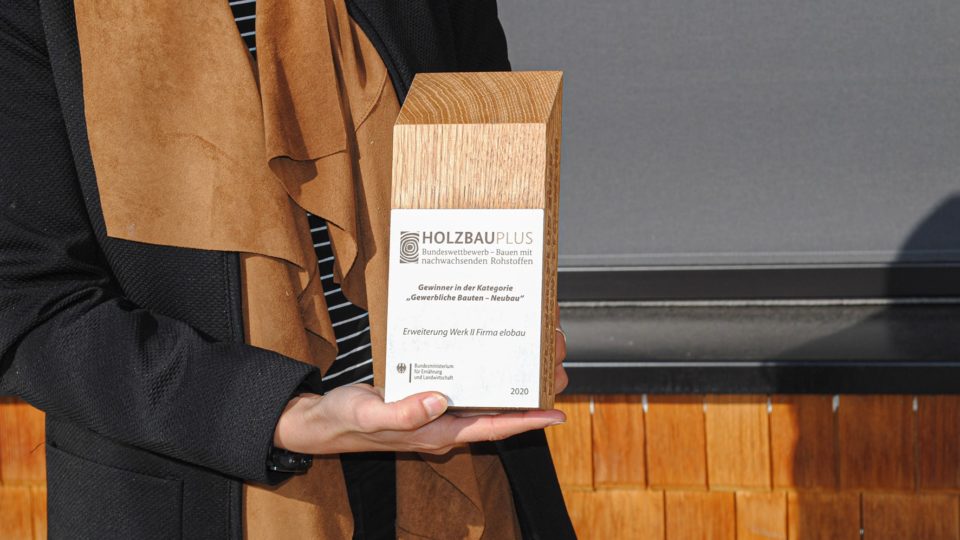

Together with F64 Architekten, elobau planned the 5,700 m2 extension to Plant II. Just like elobau’s last three new buildings, this one is also an energy-plus building that generates more energy than it consumes. The construction with a supporting structure made of spruce and beech was declared the winner in the category “Commercial Buildings – New Buildings” by Federal Minister Julia Klöckner in the national HolzbauPlus 2020 competition.
A special feature of the new building: the hall roof was planned with a focus on daylight penetration and energy generation. On the north side, large windows allow as much light as possible to enter the building without dazzling the employees and without heating up the interior. Additional brightness is provided by white reflective panels on the roof, which carry the sun’s rays to the hall ceiling. The natural light has a positive effect on the health and well-being of the employees, and it also reduces the need for artificial light. Less energy is needed. The south side of the shed roof was covered with a photovoltaic system and now generates energy across the entire surface of the hall roof.

Use less energy, generate more energy
This statement formed the basis of elobau’s last three new buildings, which were planned together with the architects from Kempten. “In projects with F64 Architekten, the components of resource-saving construction, unrestricted functionality and the aesthetic demand on architecture can be combined very well for us. This is a challenge in planning,” says Michael Hetzer, chairman of the ensian group advisory board, summarising the partnership.

The jury’s appreciation was as follows:
“CO2 neutrality as a target value in timber construction in combination with a highly flexible building concept with improved utilisation options and a holistic company philosophy gives reason to hope that many builders of commercial buildings will strive for similar quality.
With the new building, the client in Leutkirch expanded its Plant 2 by a hall with production and office workplaces in energy-plus standard. The building was constructed in accordance with the company’s own principles of “elobau goes green” as an energy-plus house in timber construction. The motto “Elobau goes green” goes far beyond the building. The building owner has already received several awards for this commitment, e.g. for energy management, employee mobility and the common good economy, which quantifies the company’s ecological and social performance in addition to its economic performance.
The electrical energy required for operation is provided by photovoltaic systems on all roofs. In terms of infrastructure, the new building was connected to the existing building. The extension of plant 2 was carried out in two construction phases (BA 3 and BA 4) with almost 5,700m2 . After the realisation of a further construction phase, the extension will cover an area of approx. 8,000m2 in its final state.
Construction phase BA 3 is located on the site next to the existing building and connected to it by means of a connecting corridor. For this purpose, the building edge of plant 2 was taken up. Construction phase BA 4 extends the extension to a total of 75m after an offset. The building is characterised by seven saw-tooth roofs, which are consistently arranged in a grid of approx. 12.5m. Their skylights, which face north, make optimal use of daylight and improve natural lighting. The span width and consequently the distance between the columns is also 12.5m.
For the supporting structure in the form of clearly comprehensibly designed trusses, components made of beech were combined with classic softwood products. In combination with the brightly coated acoustic panels of the soffit, the result is bright, friendly workspaces. By means of a flexible partition wall system, the office area is acoustically separated from the production areas. The small-structured façade cladding with wooden shingles contrasts with the clear geometry of the entire facility without representing a contradiction.
Production is designed to be CO2-neutral, and all roofs are covered with solar panels. Attention was paid to the careful use of resources and the use of sustainable, regional products and materials.


Comments
write a comment